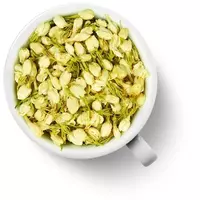Jasmine

Jasmine or yasemin belongs to the genus of evergreen shrubs included in the Maslin family. In our latitudes, jasmine is often confused with chubushnik. This shrub is similar in appearance to jasmine. In addition, white chubushnik flowers are distinguished by their sweet aroma, as is jasmine. Currently, over two hundred different species of jasmine can be found in nature.
The jasmine plant is distributed mainly in warm climatic zones, including in the subtropics. Jasmine grows in Asia, Africa, as well as on the European continent and in Australia. Jasmine belongs to heat-loving plants, so only two species of jasmine grow in Europe. These plant species are distinguished by their resistance to temperature changes and harsh climatic conditions.
Jasmine species
Among the most popular and common types of jasmine are:
yellow jasmine or Jasminum fruticans;
Italian yellow jasmine or Jasminum humile;
rejected jasmine, differs in its habitat, the plant grows exclusively on the territory of the Darvaz ridge;
Jasminum officinale white or medicinal jasmine is most commonly used in cooking.
Often, jasmine inflorescences are called "king among flowers. " Jasmine received this title thanks to his smell and taste. Most often, jasmine flowers are used to make drinks. The taste of green tea with jasmine is classically considered. From the inflorescences of the plant, jam is made, jasmine is dried or oil is obtained from shrubs.
Jasmine composition
The plant is distinguished not only by its delicious aroma and taste characteristics, as well as by its vitamin and mineral composition. The chemical composition of jasmine contains biologically active natural compounds, essential oils and acids. The useful properties of jasmine have been known to people since antiquity. Even in ancient Greece, jasmine inflorescences were used for medical and cosmetic purposes.
Jasmine contains formic, salicylic and benzoic acids, as well as esters that have a powerful anti-inflammatory effect. The chemical composition of jasmine completely determines the properties of the plant. The beneficial properties of jasmine extend to the entire human body as a whole. However, jasmine can be most beneficial for people who suffer from liver disease (cirrhosis) or hepatitis.
The benefits of jasmine
It is known that jasmine is an excellent antipyretic agent, therefore, in folk medicine of a number of states, a decoction or infusion from inflorescences of the plant is used in the treatment of colds, as well as insomnia. Doctors argue that the exclusivity of the benefits of jasmine is that the plant has a calming and relaxing effect. In addition to jasmine inflorescences, the root, stems and leaves of the plant are used in folk medicine.
The harms of jasmine
True, even such a useful plant on all sides as jasmine has its own contraindications and a risk group. The harm of jasmine can be expressed in the occurrence of persistent allergic reactions in people who suffer from individual intolerance to the product. As a rule, allergic reactions occur in the case of eating "pure" decoction from jasmine inflorescences. It is worth noting that harm from jasmine, which is added to black or green tea as a flavoring agent, is unlikely.
jasmine 1 kCal
Energy value of jasmine (Ratio of proteins, fats, carbohydrates - ju):
Proteins: 0.1 g (~ 0 kCal)
Fats: 0 g (~ 0 kCal)
Carbohydrates: 0 g (~ 0 kCal)
Energy ratio (b | y): 40% | 0% | 0%
 Español
Español Français
Français Português
Português Русский
Русский 简体中文
简体中文 繁體中文
繁體中文 日本語
日本語 한국어
한국어 العربية
العربية Türkçe
Türkçe Қазақ
Қазақ Deutsch
Deutsch Italiano
Italiano Українська
Українська
